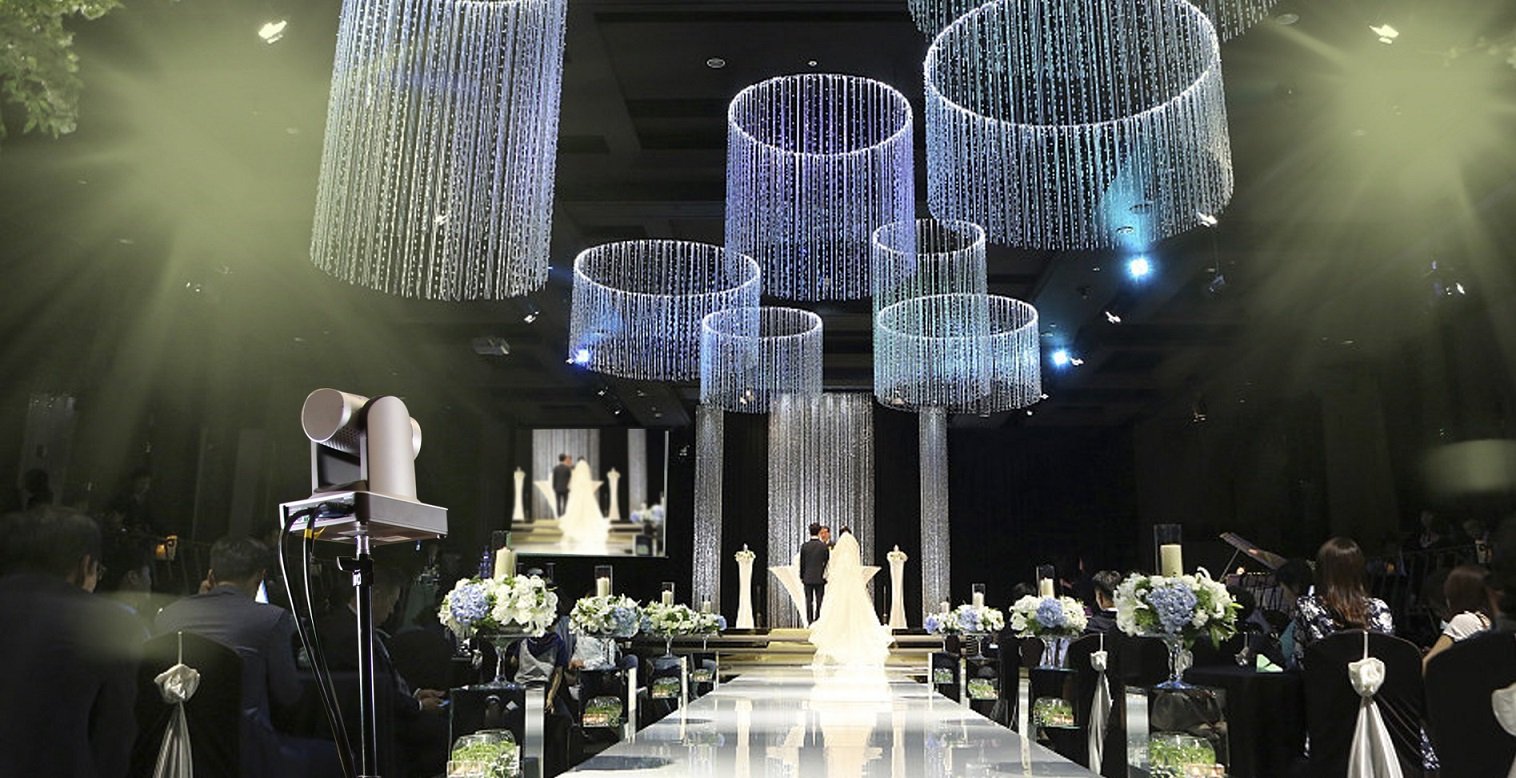Multi-cam live production using PTZ (Pan-Tilt-Zoom) cameras allows for capturing and switching between multiple camera angles in real-time, commonly used in broadcasting, live events, conferences, and other productions. The setup typically involves the following components and steps:
- PTZ Cameras: PTZ cameras are remotely controlled cameras that can pan, tilt, and zoom to capture different perspectives. Multiple PTZ cameras are strategically positioned in the production area to cover various angles and focal lengths.
- Camera Control Units (CCUs): Each PTZ camera is connected to a Camera Control Unit or CCU, which serves as the central control hub for managing camera movements, zoom, and other settings. The CCU allows operators to remotely control and adjust the PTZ camera parameters.
- Video Switcher: A video switcher, also known as a vision mixer or production switcher, is used to switch between the different camera feeds. It allows the director or operator to select which camera angle is displayed as the program output at any given time. The switcher can be a hardware device or software-based, depending on the setup.
- Video Mixer/Multi-view Display: In multi-camera productions, a video mixer or multi-view display is used to preview and monitor the camera feeds simultaneously. It provides a consolidated view of all the camera angles, allowing the director or operator to make decisions on which camera feed to switch to during the live production.
- Control Interface: The director or operator utilizes a control interface to interact with the video switcher and CCUs. This can be a physical control panel with buttons and knobs or a software-based interface running on a computer or touch-screen device. The interface provides access to camera controls, switching between camera angles, and managing other production elements like graphics and overlays.
- Communication System: A communication system is crucial for coordination among the production team members. This includes intercom systems or headsets to facilitate communication between the director, camera operators, and other crew members.
- Production Workflow: The workflow for multi-cam live production involves camera positioning, framing shots, adjusting camera settings, and rehearsing camera movements and transitions. The director communicates with the camera operators through the intercom system to cue camera changes and switch between camera angles smoothly during the live broadcast or event.
- Additional Equipment: Depending on the production requirements, additional equipment such as microphones, audio mixers, lighting equipment, and graphics systems may be incorporated to enhance the overall production quality.
It’s important to note that the specific setup and equipment used may vary based on the scale and complexity of the production. The above steps provide a general overview of the multi-cam live production setup using PTZ cameras.
Multi-cam live production systems have a wide range of potential use cases across various industries and events. Some common scenarios including:
- Broadcasting: Multi-cam live production is extensively employed in television broadcasting, including news programs, sports events, talk shows, and live concerts. It allows broadcasters to capture and switch between different camera angles, enhancing the viewer’s experience and providing comprehensive coverage of the event.
- Live Events: Multi-cam setups are widely used for live events such as conferences, seminars, trade shows, and product launches. They enable organizers to capture the stage, audience reactions, and key moments from different perspectives, delivering a more immersive experience for remote viewers.
- Sports Production: Sporting events heavily rely on multi-cam live production to cover the action from multiple angles. Whether it’s a football match, basketball game, or motorsports event, the ability to switch between different camera views allows viewers to closely follow the action and catch critical moments.
- Concerts and Music Festivals: Multi-cam setups are crucial for capturing the energy and excitement of live concerts and music festivals. By utilizing PTZ cameras strategically positioned around the stage, operators can offer close-ups of performers, wide-angle shots of the crowd, and dynamic footage that captures the essence of the event.
- Worship Services: Many religious institutions employ multi-cam live production systems to enhance their worship services. By switching between different camera angles, congregants at home or in remote locations can feel more connected to the service, seeing the stage, speakers, and performers up close.
- Educational Institutions: Multi-cam setups find utility in educational settings, such as recording lectures, demonstrations, or interactive sessions. The ability to switch between different camera views helps capture the instructor, students, and visual aids, facilitating a more engaging learning experience.
- Corporate Events and Presentations: Companies often utilize multi-cam live production for corporate events, conferences, and presentations. It allows for professional coverage of keynote speakers, panel discussions, and product demonstrations, ensuring remote attendees have a high-quality viewing experience.
- Virtual Events and Webinars: With the rise of virtual events and webinars, multi-cam live production becomes vital to deliver visually compelling content. By incorporating multiple camera angles, speakers, presentations, and audience interactions can be seamlessly captured, increasing engagement and maintaining viewer interest.
These are just a few examples of the diverse applications for multi-cam live production systems. As technology advances and creative possibilities expand, the potential use cases continue to grow, enabling captivating and immersive experiences for audiences around the world.

